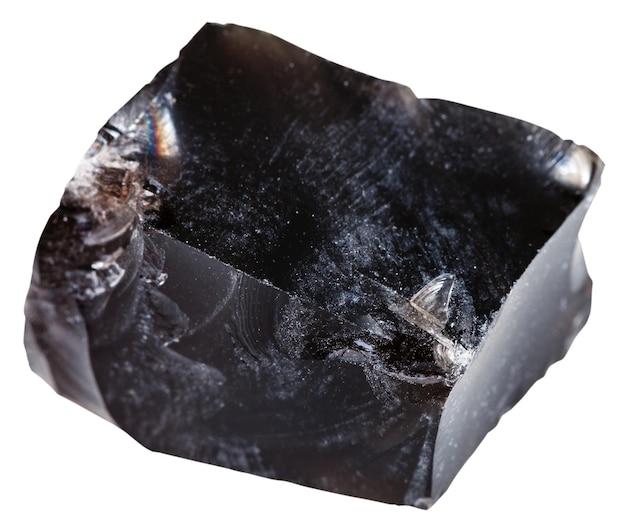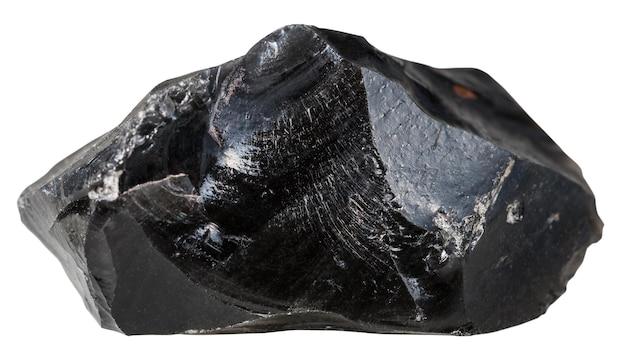Obsidian, the enigmatic volcanic glass, has captivated humans for centuries with its intriguing appearance and unique properties. Its glossy texture and dark color give it a captivating allure. But have you ever wondered why obsidian has such a glassy texture? In this blog post, we will delve into the fascinating origins and characteristics of obsidian to unravel the mystery behind its distinctive texture.
Throughout this article, we will explore various aspects related to obsidian, including its appearance in real life, potential dangers, and its scarcity. We will also delve into the practical uses of obsidian and how its texture is described. So, if you’ve ever been curious about this enigmatic rock or have questions about its texture and properties, you’ve come to the right place. Let’s dive in and discover the mesmerizing world of obsidian.
Why Does Obsidian Have A Glassy Texture
Obsidian, oh obsidian! It’s not just any ordinary rock. This volcanic glass has a fascinating story behind its alluring glassy texture. So, buckle up and get ready to dive into the enchanting world of obsidian!
The Fiery Birth of Obsidian
Obsidian is born from volcanic eruptions, making it one fiery rock! When lava spews out of a volcano, it cools rapidly, giving little time for crystallization to occur. This rapid cooling is the secret sauce behind obsidian’s smooth and shiny texture. It’s like Mother Nature saying, “I’m busy, no time for crystal formation here!”
The Chemistry Behind the Glassiness
Now, let’s unravel the chemistry that makes obsidian so captivatingly glassy. Obsidian mainly consists of silicon dioxide, also known as silica. What’s interesting is that the silica content in obsidian is so high that it forms a random, amorphous arrangement of atoms. Imagine a wild party where atoms are dancing chaotically without forming any organized structures. That’s obsidian for you!
The Cool-Down Race
Obsidian’s glassy texture is a result of its rapid cooling, but the rate at which it cools depends on various factors. One critical factor is the thickness of the lava flow. Thicker flows cool slower, allowing crystals to form, resulting in a less glassy texture. Thinner flows, on the other hand, cool faster and prevent crystal formation, resulting in that stunning glassy goodness.
Time, the Enemy of Glassiness
As years pass by, obsidian’s glassy texture can slowly change. In the presence of water or moisture, obsidian can start to undergo a process called hydration. This process causes the glassy surface to gradually transform into a more dull and matte-like texture. So, if you come across ancient obsidian artifacts that aren’t as shiny, blame it on the passage of time!
The Cutting Edge of Obsidian
Obsidian’s glass-like texture isn’t just pleasing to the eye; it also boasts practical benefits. Its sharp edges made obsidian a valuable tool for our ancestors. In fact, obsidian blades have been used for thousands of years for various purposes, including cutting, scraping, and even surgical procedures. Talk about a rock that rocks!
Time to Appreciate Mother Nature’s Artistry
Now that you know the secrets behind obsidian’s glassy texture, take a moment to appreciate the beauty crafted by Mother Nature herself. Obsidian’s volcanic origins, the amorphous dance of its atoms, and the delicate balance of cooling and crystal formation all contribute to its breathtaking appearance. So, next time you stumble upon obsidian, remember the fiery birth that gave it that alluring glassy charm!
FAQ: Why Does Obsidian Have a Glassy Texture
Obsidian, the stunning natural glass formed from volcanic activity, has long fascinated people with its smooth, reflective surface. In this FAQ-style guide, we’ll dive into the questions surrounding the glassy texture of obsidian. So, let’s satisfy our curiosity, shall we?
What does obsidian look like in real life
Picture a sleek, glossy black surface with the occasional smattering of gray. Obsidian’s appearance is akin to a midnight sky sprinkled with stardust. It’s like having a piece of the universe in your hands.
Where should I put black obsidian in my house
Black obsidian is believed to have potent protective qualities and can shield against negativity. Feng shui enthusiasts often recommend placing it near the entrance of your home or in the corners of your living space to create a positive energy flow. Just make sure it doesn’t clash with your decor—crystal vibes and aesthetic vibes need to be in harmony!
Is obsidian dangerous
While obsidian may appear fearsome, it lacks the sharpness we typically associate with glass. So, don’t fret! However, it’s always wise to handle it with care, as it can still have rough edges. Treat it gently to avoid any unwanted surprises.
Why is obsidian glassy
Well, when a volcano erupts, hot molten rock called magma rises to the surface. This magma cools rapidly when it encounters the cooler air or water, preventing large mineral crystals from forming. The quick cool-down process leaves obsidian with its characteristic glass-like texture.
What crystals should not be in your bedroom
Ah, the sacred haven where dreams are woven! While crystals are fantastic companions, some experts advise against placing certain ones in the bedroom. Amethyst and rose quartz, for example, may be too energizing for a peaceful slumber. However, it ultimately depends on your personal preferences and how these crystals make you feel.
Is obsidian rare
Not at all! Obsidian can be found in various locations worldwide. However, while it may not be rare in terms of availability, its unique beauty makes it highly sought after by collectors and crystal enthusiasts alike.
What is obsidian good for
Obsidian offers more than just a breathtaking appearance. It has a rich history of use, including spiritual and healing practices. People often turn to obsidian for grounding, protection, emotional healing, and even scrying—a practice of divination or seeking guidance through reflective surfaces.
How do you describe the texture of a rock
The texture of a rock refers to its overall appearance and feel. It encompasses factors such as grain size, shape, and arrangement, as well as the presence or absence of pores or crystals. In the case of obsidian, its texture is unmistakably glassy, smooth, and lustrous.
What’s the texture of obsidian
Obsidian’s texture is ultra-smooth and glass-like, owing to its rapid cooling process. Imagine running your fingers across a polished window pane—obsidian is just as sleek and reflective.
What does obsidian feel like
When you hold obsidian in your hand, you’ll immediately sense its cool, captivating touch. It’s as if you’re holding a piece of volcanic history—a tangible connection to the Earth’s fiery past. Its smoothness is undeniably soothing to the touch, leaving you yearning for more.
What rocks have a glassy texture
Obsidian is the rock that takes the crown when it comes to a glassy texture. Other volcanic rocks, such as pumice and volcanic glass (like tachylyte), can also exhibit a glassy appearance due to similar rapid cooling processes.
Are glassy rocks intrusive or extrusive
Glassy rocks are extrusive in nature, meaning they’re formed from volcanic activity. When magma erupts onto the Earth’s surface, it cools rapidly, resulting in glassy textures. On the other hand, intrusive rocks, such as granite, form when magma cools slowly beneath the surface, allowing for the growth of visible crystals.
What are three types of igneous bodies
We can’t talk about rocks without discussing the fascinating world of igneous bodies! These include intrusive bodies, extrusive bodies, and volcanic necks. Volcanic necks, such as Shiprock in New Mexico, form when magma hardens in the volcano’s pipe and the surrounding rock erodes, revealing an impressive structure.
Is obsidian really strong in real life
Appearances can be deceiving! While obsidian may look like an indestructible force, it is quite brittle—far from being one of Earth’s strongest rocks. But don’t let its delicate nature dissuade you from embracing its captivating beauty!
What does glassy mean in rocks
When we describe a rock as “glassy,” we mean that it has a smooth, reflective texture similar to glass. This texture arises from the rapid cooling of lava or magma, which prevents the growth of larger mineral crystals. Consequently, rocks like obsidian take on a sleek, glass-like appearance.
Is obsidian valuable
Obsidian’s worth is subjective—it depends on how much it ignites your passion! While it may not carry the same price tag as precious gemstones, obsidian holds immense value for those who adore its unique properties and striking beauty. In the realm of crystals, true worth lies in personal connection and appreciation.
What is the texture of metamorphic rocks
Metamorphic rocks, born from the transformation of pre-existing rocks under intense heat and pressure, possess various textures. Examples include foliated textures with distinct layered patterns and non-foliated textures characterized by a lack of layering. The textures vividly narrate the tales of their transformative journeys.
What does porphyritic texture mean
Ah, porphyritic texture—a fancy term that encapsulates a distinctive rock pattern. Rocks with porphyritic texture have larger crystals, called phenocrysts, embedded in a finer-grained matrix or groundmass. These crystals stand out, demanding attention like dazzling stars in a cosmic universe.
What do intrusive igneous rocks look like
Intrusive igneous rocks, formed from slowly cooling magma beneath the Earth’s surface, possess a stunning array of textures. They can range from coarse-grained with large, visible crystals (like granite) to fine-grained with tiny, hardly discernible crystals (like basalt). Each rock tells a different tale of its underground adventures.
What is one way a glassy texture forms
One way a glassy texture forms is through the rapid cooling of molten rock, either when it encounters the cooler air above the Earth’s surface or when it comes into contact with water. This quick cooling inhibits the formation of mineral crystals, resulting in a mesmerizing glass-like texture.
What does a rock’s texture reveal about its history
A rock’s texture acts as a fascinating storyteller, unveiling clues about its formation and journey through time. From the size and arrangement of crystals to the presence of pores or layers, texture offers insights into the rock’s cooling rate, pressure conditions, and sometimes even the tumultuous forces that shaped it.
What is the most common type of extrusive rock
Basalt, the James Bond of rocks (cool and adventurous), takes the crown as one of the most common extrusive rocks on Earth. With its fine-grained texture and dark coloration, basalt frequently emerges as the product of rapid lava cooling, especially in volcanic areas.
What crystals should not be together
While crystals love good company, some just don’t mix well. For instance, amethyst and citrine are often advised to be kept apart, as their energies may clash. Similarly, black tourmaline and selenite might not see eye to eye. It’s best to research and trust your intuition when it comes to crystal combinations—after all, each crystal shining solo is a beauty of its own.
And there you have it, a comprehensive FAQ-style guide unraveling the mysteries behind the mesmerizing glassy texture of obsidian. We hope this knowledge sparks curiosity and ignites a deeper appreciation for Earth’s magnificence. Embrace the glassy wonders of obsidian and explore the enchanting world of rocks and crystals!
Stay curious, rock enthusiasts!
Disclaimer: The information shared in this article is for educational and entertainment purposes only. It is not intended as professional or medical advice, nor does it substitute for personalized recommendations from qualified experts.

